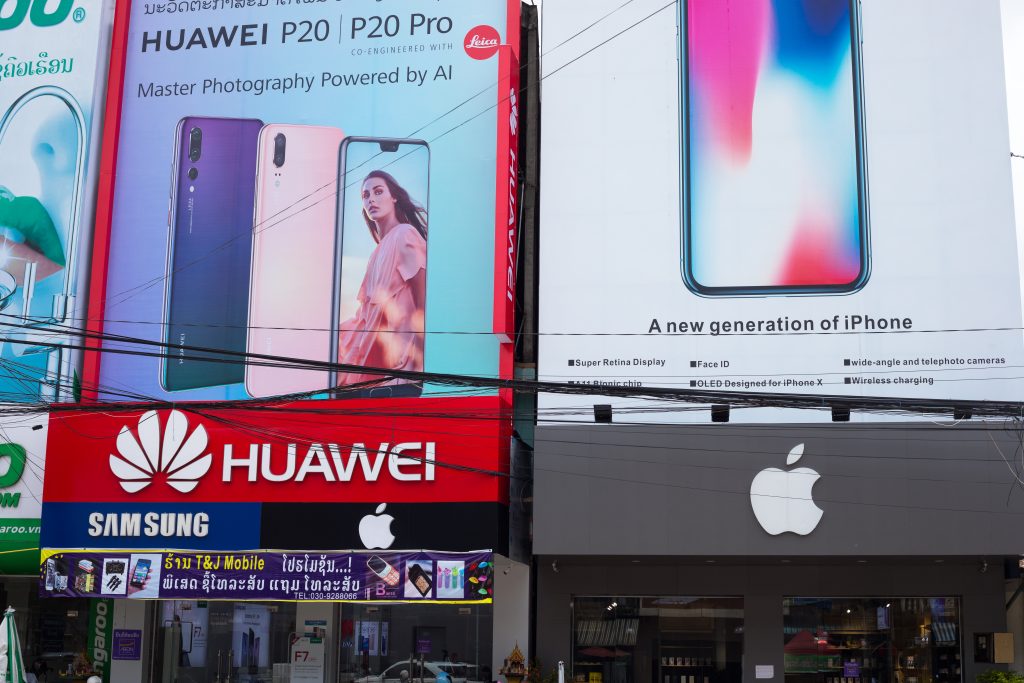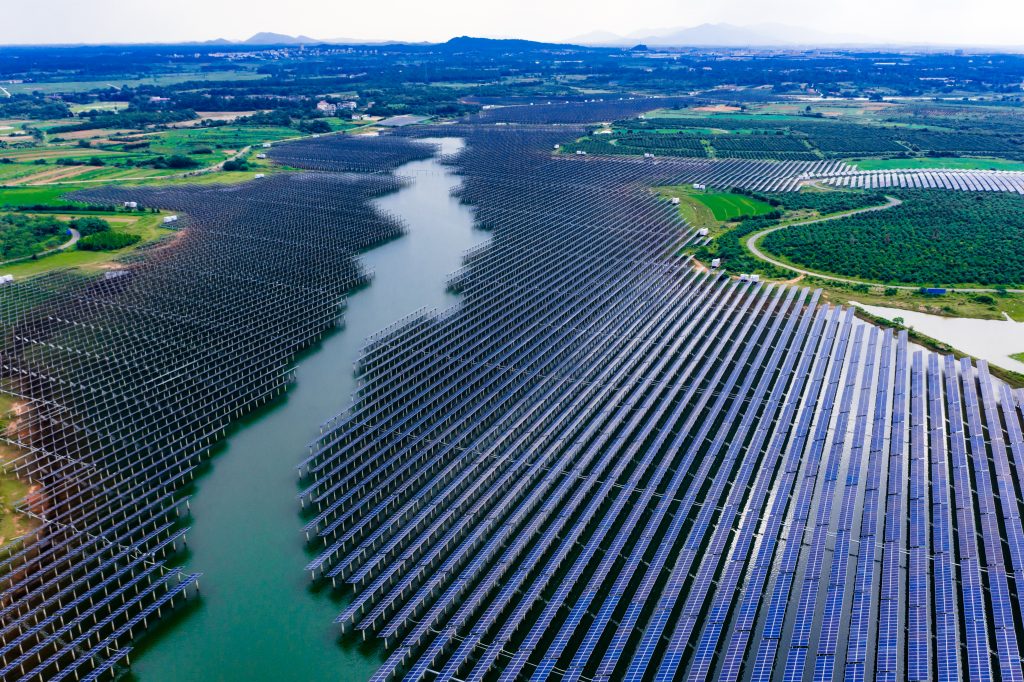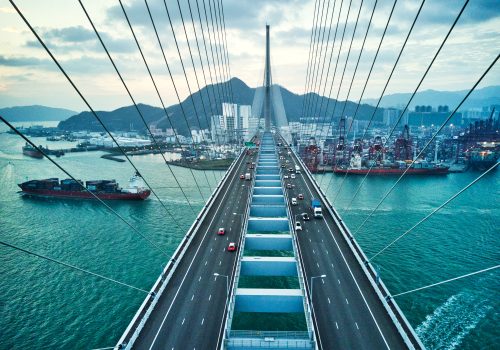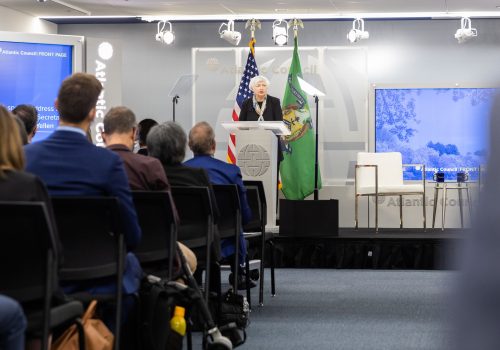October 27, 2022
Our guide to friend-shoring: Sectors to watch
Table of contents
Sector 2: Telecommunications, 5G infrastructure
Sector 3: Equipment needed for the green energy transition
Sector 4: Active pharmaceutical ingredients
Sector 5: Strategic and critical minerals
Introduction
Weaponizing economic relationships in the service of national security and geopolitical goals has come of age with Russia’s 2022 invasion of Ukraine. The strategy had already been employed against small countries such as Iran, Venezuela, and North Korea, but the Trump administration’s trade war against China brought it to a new level. The COVID-19 pandemic has heightened concerns about relying on China for critical strategic and medical products. The United States and, to a lesser extent, Europe have floated various concepts to indicate how they would respond to these perceived vulnerabilities including reshoring or nearshoring in an attempt to reverse the consequences of the offshoring that has contributed to making China a global manufacturing and trade powerhouse. In her speech to the Atlantic Council in April, US Treasury Secretary Janet Yellen used the term “friend-shoring” to describe efforts to reconfigure global supply chains so that key manufacturing nodes would be relocated in politically friendly and reliable countries.
This comes at a time when China has embraced their dual circulation strategy articulated in its fourteenth five-year plan with a program called Made in China 2025 at its core—aiming to reduce China’s reliance on other countries while trying to increase their reliance on the Chinese economy. President Xi Jinping, in his opening speech at the Twentieth National Congress of the Chinese Communist Party (CCP), reaffirmed that China will strive for self-reliance in science and technology.
Attempts to decouple or diminish the economic and technological relationships between the West and China have presented difficult challenges to policymakers as well as corporate executives. Basically, China occupies a crucial position in global supply chains: being the top manufacturer, including of high-tech goods; accounting for 18 percent of the global gross domestic product (GDP) and 15 percent of world trade; and ranking among the top trade and investment partners to most countries on Earth. It is thus not an easy task to divert global supply chains away from China. This article aims to document the progress, potential, limits, and implications of friend-shoring—and China’s countermeasures—especially in the production and supply of critical high-tech and strategic products, focusing on five key sectors.
Sector 1: Semiconductors
The most visible example of the high-tech decoupling between China/Russia and the United States/West is about advanced semiconductors—triggered by the Trump administration’s ban on sales to Chinese companies of advanced computer chips and other critical high-tech products containing US inputs including intellectual property (IP) that is on the US Entity List, a Commerce Department roster of licensing requirements. President Biden has expanded the ban to include chip and memory-making equipment as well as chip design software to a lengthened list of Chinese entities—now numbering around six hundred. Many Russian companies were added to the Entity List in 2022 after the February invasion of Ukraine. On October 7, 2022, the Biden administration imposed new and extensive export controls on artificial intelligence (AI) and semiconductor technologies to China, with the goal of retaining US control over “chokepoint” technologies in the global semiconductor supply chains.
China has led the world in the manufacturing and exports of high-tech consumer goods; for example, the nation produced 250 million computers and 1.5 billion smart phones in 2020. Many of those products rely on semiconductors—especially advanced chips for sophisticated capabilities. China has increased its fabrication of semiconductors, mostly through foreign-owned firms in China—and now accounts for 15 percent of world production (of all chips, surpassing the United States at 12 percent). However, China still needs to import 85 percent of the computer chips used domestically. In particular, China seriously lags behind the West in critical phases of the semiconductor value chain: the design of integrated circuits (with Intel being the leader), the fabrication of chips (with TSMC and Samsung being the leaders, especially the only producers of 7- and 5-nanometer (nm) chips and soon 3-nm chips), and the production of semiconductor manufacturing equipment (with ASML of the Netherlands being the leader, especially in the extreme ultraviolet (EUV) lithographic etching devices required to produce the most advanced chips). China does produce run-of-the mill or legacy semiconductors (mainly 25- and 17-nm chips), but so far meets only 15 percent of domestic demand, relying on imports for the rest. According to ASML CEO Peter Wenning, it would take China up to fifteen years to catch up and become self-sufficient in semiconductors. In the meantime, the United States/Western ban on selling advanced chips, together with other restrictions, has greatly hindered sanctioned companies in their efforts to develop and produce more sophisticated products. The problem is, when China becomes self-sufficient in semiconductors, Western companies will have lost a huge market in China—accounting for more than 60 percent of global demand. This prospect will constrain their own future growth.
The Western advanced-chips ban on several Chinese entities has occurred alongside efforts by the United States, the European Union, and China to secure reliable supply of semiconductors and to reduce reliance on opponents. In August, President Biden signed into law the CHIPS and Science Act of 2022 (CHIPS+), which Congress passed after two years of debate. CHPS+ will provide $52 billion to subsidize the design and manufacturing of computer chips in the United States, a 25 percent investment tax credit to incentivize investment in chip production in the country, as well as about $200 billion to support science and development activities to spur innovation. Companies receiving US chip support will be barred from expanding production in China that is beyond “legacy semiconductors” (i.e., 25-nm and older chips) for ten years. In response to incentives from the US federal and state governments, several global corporations have announced plans to invest in semiconductor manufacturing plants in the United States. These include TSMC ($35 billion in state-of-the art wafer fabrication in Arizona), Samsung ($17 billion in Texas), Intel ($29 billion in Ohio), Texas Instruments (up to $30 billion in Texas), Micron ($40 billion), and Qualcomm ($4.2 billion). When implemented, these plants will add meaningfully to US semiconductor manufacturing capacity, reducing the need for imports.

The United States has also proposed a Chip 4 Alliance with Japan, South Korea, and Taiwan to cooperate more closely in all phases of the computer-chip supply chain, aiming to exclude China in the process. While Japan and Taiwan are likely to join the alliance, Korea’s attitude has been ambivalent: Seoul said that it will participate in a preliminary meeting in the near future, but has not clarified whether it will formally join the alliance. China has exerted strong pressure on Korea not to join.
Similarly, the European Commission has proposed a European Chips Act, aiming “to prevent, prepare, anticipate, and respond to future supply chain disruption, and enable the EU’s ambition to double its current market share of semiconductor production to 20 percent in 2030.” This act will also mobilize €43 billion ($42.01 billion) of investment in the semiconductor sector. The proposed act is currently going through the legislative process at the European Parliament and with member countries. Intel has committed $36 billion of investment to produce chips in Europe—as part of an €80 billion investment plan over the next decade. Furthermore, the Dutch government plans to invest €1.1 billion to build a new national champion in photonic technology, similar to Eindhoven-based ASML, which is the global leader in EUV lithographic equipment to make chips; this sophisticated equipment has been blocked from being sold to China by the US and Dutch governments.
In response, China has mobilized financial resources via a number of state-sponsored venture capital funds to invest in semiconductor companies and start-ups—accompanied by generous government support packages. Beijing has allocated more than $100 billion to develop a domestic semiconductor industry to break dependence on the West. Recently, $26 billion was invested in twenty-nine additional wafer-fabrication projects alone. Furthermore, existing semiconductor companies are raising their investments: Semiconductor Manufacturing International Corp. (SMIC), China’s leading chip manufacturer, has raised its level to $5 billion this year to expand its capacity. Notably, SMIC has announced that it has been able to produce 7-nm chips, something a Chinese maker had not been able to do before. (It’s not clear how soon SMIC can produce such chips at scale without access to advanced equipment). Those efforts have increased China’s chip production to 359.4 billion of integrated circuits (ICs) in 2021, 33.3 percent more than 2021 and doubling the growth rate in the previous year. Since China still cannot meet the lion’s share of domestic demand for semiconductor chips, imports rose more than 30 percent to $432 billion in 2021, compared to chip imports in 2020. In any event, China’s leadership has felt frustrated by the slow progress of the chip self-sufficiency effort, and has launched a series of corruption investigations into officials in the chip sector and the investment funds set up to fund the chip companies and start-ups.
These developments reflect the fact that China is dependent on the West (including Taiwan) for advanced semiconductors for some time to come, during which time China is vulnerable to US measures to block all sales to China of semiconductors as well as chip-making equipment and design software. In addition, the latest US measures also ban US persons from working for the listed Chinese companies—causing an exodus of foreign talent from these companies and hurting their operations. So far, sanctioned companies such as Huawei, being denied access to advanced semiconductors, have suffered steep declines in production and sales of smart phones and have to reorient their businesses to products requiring less-advanced chips.
Sector 2: Telecommunications, 5G infrastructure
Telecommunication services and infrastructure, especially using 5G technology, have been the first and most important case of technological decoupling between the United States and China—driven by national security concerns as China’s leadership position in 5G technology has significant commercial, intelligence, and military implications. China now is the largest 5G market in the world, accounting for 87 percent of 5G connections worldwide. Concretely, at the end of 2021, China had 368 million of 5G users compared to six million in the United States, and 1.43 million base stations to the United States’ 100,000. Huawei and ZTE of China have been the global leaders in providing 5G infrastructure including base stations—by offering acceptable quality solutions competitively priced and financed compared to its main competitors Ericsson, Nokia, and Samsung. The United States has accused Huawei of using its installed equipment to collect intelligence for the Chinese government and therefore has banned Huawei equipment in US telecom networks as well as sales to the company of high-tech products, either produced in the United States or internationally using US inputs. The United States has also waged a persistent campaign to dissuade other countries from using Huawei equipment to limit the risks of being spied upon by China.

So far, the sanctions on Huawei have significantly reduced its production and sales of smartphones requiring advanced computer chips, forcing the company to rely on domestic phone sales and further developing 5G infrastructure, software, and cloud services businesses. By contrast, the US effort to convince other countries not to use Huawei equipment has produced mixed results. Only a handful of countries including the United Kingdom, Japan, and Australia have decided to exclude Huawei equipment from their telecom networks; several others have not made a formal decision but said that they will closely examine the risks of using Huawei products in the critical parts of their networks. A majority of countries, especially in the developing world, have continued to do business with Huawei, mainly due to the lack of viable alternatives. For example, in Africa, where Huawei accounts for 70 percent of 4G telecom networks, it is easier and cheaper to upgrade to 5G using the same provider. As a result, Huawei has been able to maintain its global leadership positions, by large margins, in both 4G and 5G markets. China’s 5G market leadership position and track record in being well ahead of the world in rolling out that infrastructure (including base stations and services) and in customer usage, will give Huawei and other Chinese companies like ZTE strong competitive advantages in fully exploiting the potential of 5G and preparing to develop 6G technology in the foreseeable future.
In short, the US and its close allies will intensify their efforts to develop and source telecom equipment in their own markets or from friendly countries, while Chinese equipment (including from Huawei) will continue to be used by most other countries, especially in the developing world. Consequently, the telecom market will diverge into two competing systems, developing different technological and regulatory standards.
Sector 3: Equipment needed for the green energy transition
Solar panels, wind turbines, and high-capacity batteries are necessary equipment for the energy transition to produce solar and wind energy and to power electric vehicles. China has long prioritized these sectors in its development plans, including the Made in China 2025 program launched in 2015. With concerted and comprehensive support, China’s state owned enterprises (SOEs) have been able to dominate the global supply chains of these products. The United States and Europe have yet to develop systemic plans to address China’s dominance in these sectors.
For solar panels, China has been able to undercut Western competitors—especially US pioneers of the technology who led the industry for decades—and to drive them out of business. Consequently, Chinese companies have practically cornered the market of these products, controlling more than 80 percent of all manufacturing critical for the production of solar panels, including more than 95 percent of the world’s production of polysilicon and wafers.
Years after Washington increased tariffs on Chinese solar panels, the Department of Commerce is now investigating charges that Chinese companies assemble solar cells and modules in Cambodia, Malaysia, Thailand, and Vietnam—which now account for 80 percent of annual solar panel imports of the United States. The investigation reduced the importation of solar panels, stalling green energy conversion projects. Consequently, President Biden has signed executive orders invoking the Defense Production Act to boost domestic solar panel manufacturing. The president also announced a two-year halt in new solar panel tariffs.

China has significantly led in commissioning new offshore wind power generating capacity, adding, for example, 6.9 gigawatt (GW) out of the global total growth of 21.1 GW in 2021—bringing the global capacity to date to 57.2 GW. Leveraging the strong growth of domestic markets, Chinese wind turbine makers have become globally competitive, gaining ground on US and European players. Chinese firms have managed to take seven slots out of the world’s top ten manufacturers of wind turbines.
China controls 60% of the world lithium refining, and three-quarters of lithium-ion battery production—putting itself in a position to influence the development of high-capacity and long-lasting batteries, which are crucial for the mainstreaming of electrical vehicles.
Sector 4: Active pharmaceutical ingredients
Active pharmaceutical ingredients (APIs) are key components that treat illness and are put together with excipients such as lactose or starch to manufacture drug products. In the mid-1990s, the West and Japan produced 90 percent of the world’s APIs. Due to cost pressures and tightening environmental standards, the production of APIs has been outsourced to China to take advantage of lower costs and laxer environmental requirements. As a result, China now produces about half of the world’s APIs and an even higher portion of several key ingredients: e.g., 80 percent of the global market for heparin (used for blood thinner), and 86 percent of certain antibiotics (like tetracycline/doxycycline). Furthermore, China controls an even larger share of the world’s key starting materials (KSM) market—the raw chemicals used to make APIs.
It is instructive to examine the case of India, which has earned a reputation as the world’s pharmaceutical hub. India accounts for 20 percent of the global supply of generic drugs, but relies on China for 80 percent of the APIs and even more for the KSMs that go into making their own APIs.
Despite talks about reshoring or friend-shoring the supply of critical pharmaceutical products, nothing much has happened. Customers in advanced countries have complained about the high cost of medicines and thus have preferred generic drugs—which account for 90 percent of the prescription drugs used in the United States. The pressure on drugmakers to lower drug prices have made it practically impossible for them to move their supply chains from China given its significant cost advantages.
Sector 5: Strategic and critical minerals
Generally speaking, electricity networks and batteries mainly for electric vehicles will drive 75 percent of the demand for critical minerals by 2050. China and Russia control the reserves and production of a small number of minerals critical for the manufacturing of key strategic products including catalytic converters for automobiles; magnets used in military equipment such as lasers and guidance systems; high-capacity batteries and wind turbines that are important in making electric vehicles and the clean energy transition; fiber-optic cables; and consumer electronics.
On the other hand, the United States has become increasingly reliant on net imports of key minerals for domestic uses. According to the US Geological Survey (USGS), the number of minerals whose imports account for at least 25 percent of US needs rose from twenty-one in 1954 to forty-six in 1984 and fifty-eight in 2019. In particular, the import of seventeen out of the fifty-eight minerals needed in 2019 accounts for 100 percent of US requirements. China plays a key role in the global supply chains of many if not most of these minerals. By the way, China is dependent on imports of iron ore (mainly from Australia), copper concentrate (mainly from Chile and Peru), and bauxite (with Guinea holding the largest reserves). Consequently, China also is vulnerable to disruptions in the import and shipment of those minerals in the event of sanctions and trade embargoes. China has responded to this vulnerability by making investments to gain control of mineral resources overseas, especially in Africa and Latin America.
Most talked about are rare earth elements (REE), a group of seventeen minerals, separated into heavy and light rare earths, necessary for the production of catalysts and electric magnets critically important for the above mentioned products. China possesses 36.7 percent of world reserves (compared to 1.5 percent by the United States)—but controls more than 50 percent of the mining of REEs and 90 percent of their refining and processing. According to Germany’s Federal Academy of Security Policy, China’s share of the world’s production of rare earths recently fell from almost 100 percent to 80 percent. The US Geological Services put the decline from 80 percent to 60 percent at present. In any event, the predominant position of China can be traced back to a campaign it launched in 1975 to develop and attain dominant world positions in strategic materials like rare earth elements as well as new materials; the state supported the six state-owned rare earth mining companies so they would be able to manipulate supply and prices (including by export restrictions) in world markets to undermine competitors and win market shares. More recently, China has consolidated three RE-producing units of those SOEs to form China Rare Earth Group, second in output only to China Northern Rare Earth Group. The consolidation will give the Chinese government more direct control over the activities of those REE SOEs, with implications for world markets. Under these competitive pressures and stringent domestic environmental standards, Western companies have found it more profitable to outsource the production of rare earth elements to China and import those commodities—in several cases for 100 percent of their needs.

More importantly, China has never hidden its intentions to use control of rare earth elements as weapons for geopolitical purposes. In fact, in 2009 China did withhold supply of rare earths to Japan following disputes between the two about the Senkaku/Diaoyu islands. In response, Japan has extended financing to sustain Lynas Rare Earths Ltd., the largest REE producer outside of China based in Perth, Australia, which had been suffering losses. Lynas mines REEs in Australia, but processes most of them at Kuantun, Malaysia—however, that facility can only separate light REEs, sending heavy REEs to China for processing. The US Department of Defense has signed a $120 million deal with Lynas to build the first and only heavy rare-earth separation facility outside of China in Texas, to be operational in 2025. The US government has invested and revived companies to mine rare earths in Mountain Pass, Colorado, and US production already exceeds 40,000 tons of REEs per year—second only to China—yet still has to import refined and separated REEs from China. The EU has made statements about ensuring the secure supply of rare earths, but has yet to implement any concrete projects. All together, these activities have reduced the share of China in the world’s supply of rare earths, as mentioned above. However, given the current concentration and investment controls of rare earth mineral resources by China, especially in processing heavy REEs, it is not clear if the West can achieve its goal of self-sufficiency in these critical minerals anytime soon.
Conclusion
As a strategy to reduce reliance on and vulnerability to China for critical products and commodities, friend-shoring is appealing politically. However, it is not something that can be implemented quickly. After all, global supply chains for each product have evolved over decades to exploit comparative advantages in various countries and cannot be changed easily without costs. Furthermore, China enjoys size and incumbency advantages that are difficult for competing countries to erode and surmount. Importantly, friend-shoring and onshoring essentially involve government interventions to alter the cost-benefit relationships prevalent in a marketplace that motivates commercial decisions to outsource the production of those goods to China in the first place. Such interventions—including financial subsidies, tax giveaways, and regulatory forbearance—are not without costs, especially when there are competing and urgent demands on government resources such as meeting human and physical infrastructure investment needs.
It is therefore important to monitor the implementation of the friend-shoring strategy, comparing its benefits and costs to the extent possible. In this exercise, the challenge is to measure:
- benefits such as reducing vulnerability to China and economic gains including increasing manufacturing employment; and
- costs including lost efficiency in the global economy and opportunity costs vis-à-vis meeting other social needs.
This cost-benefit analysis will likely be done on a case-by-case basis, depending on the product. Basically, the ecosystem for each product is different, with different factor endowment distributed differently among friendly and unfriendly countries. Eventually, friend-shoring is likely to progress in a selective way, focusing on specific and critical areas such as semiconductors or rare earth elements, and probably is not going to happen widely across the board.
On balance, it is too early to say how much friend-shoring will be realized and how much that will enhance the security of the United States and Europe; and similarly, how much the high-tech self-sufficiency drive will help China. However, it is clear that friend-shoring and China’s countermeasures will deepen the division of the world into two economic spheres. Decoupling will impose a cost in terms of lost efficiency due to fragmentation and the fact that economic activities are increasingly being decided on national security and geopolitical grounds, and not purely on commercial calculations. This will slow the potential growth rate of the global economy, to the detriment of everyone but mostly the poor segments of society.
Hung Tran is a nonresident senior fellow at the Atlantic Council, former executive managing director at the Institute of International Finance, and former deputy director at the International Monetary Fund.
Related content
Image: Drone Point View of Cargo Ship in the Port. Aerial view of Coal Ship in a port.

